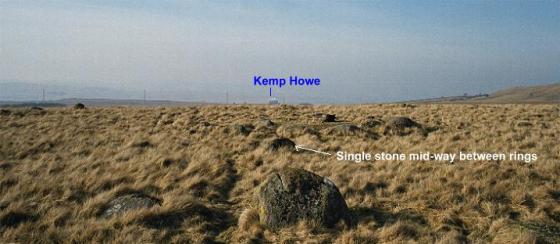Sunday 29 June 2003
From Castlehowe Scar stone circle, we continued south to the end of the plantation on the left. It’s worth noting that the lane does a sharp left and then turns right to continue south to avoid the revolting newish Hardendale quarry. (Older maps show it as going straight on.)
For Iron Hill we simply parked at the second of these corners and walked up the overgrown lane that goes straight on at the corner.
As you reach the brow of the hill after a couple of hundred yards, tops, the bizarre ‘Iron Hill north’ cairn ‘chopped in half’ by the wall appears on your left. To the right is Iron Hill south.
Can’t add much to Fitzcoraldo’s description, except to echo that it’s worth a visit if you’re around. The views must have been beautiful pre-quarry & still are if you manage to look in a direction that excludes the damn thing. Still, won’t be there forever I guess.






















































































